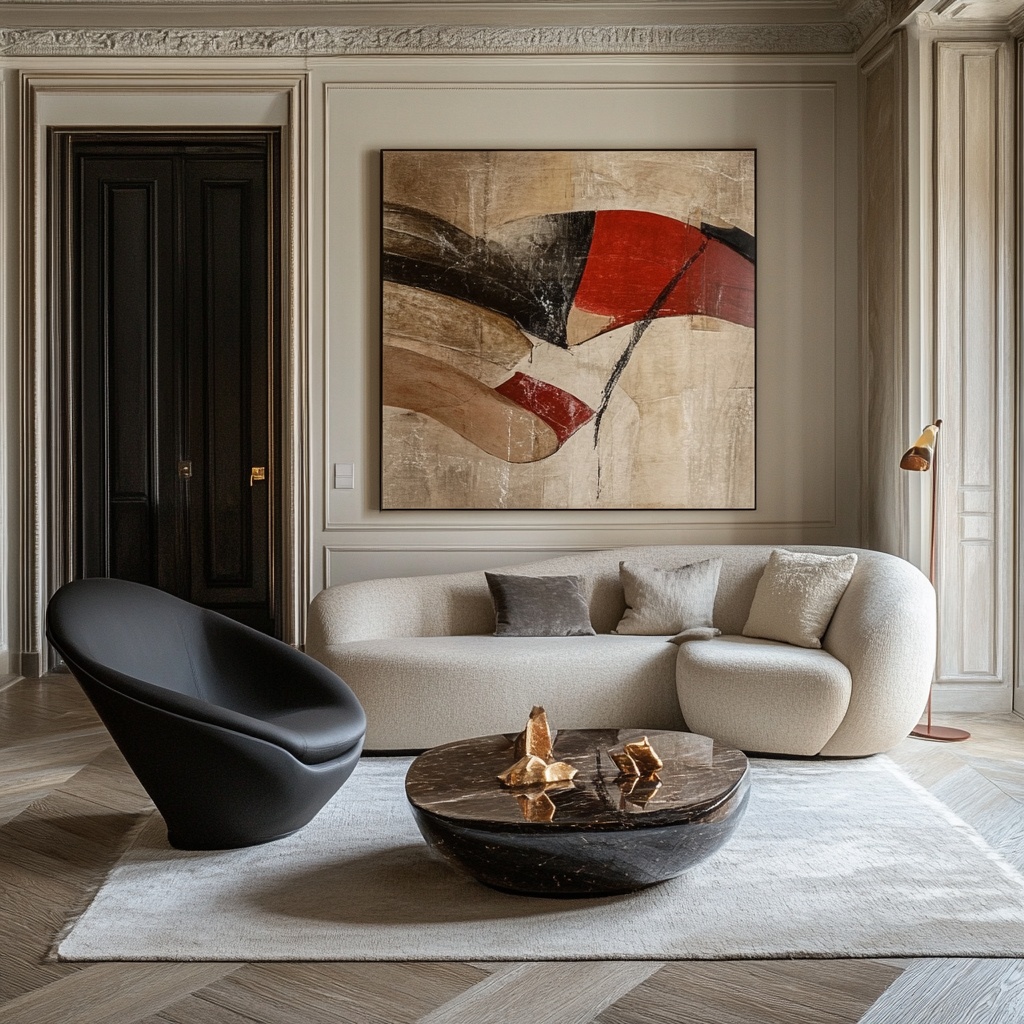
Inside the Mind of an interior Stylist: My Top Tips & Tricks
Step into any well-styled home and you’ll instantly feel it—that unspoken harmony, the inviting warmth, the effortless balance of form and function. But what you’re seeing is more than just good taste—it’s the eye of an interior stylist at work. Styling goes beyond basic decorating. It’s about storytelling through space, evoking emotion, and making design both functional and fabulous.
In this blog, I’m pulling back the curtain and sharing what truly goes on inside the mind of an interior stylist. Whether you’re revamping your living room, refreshing your bedroom, or just want to understand the secret sauce behind magazine-worthy interiors, this guide offers a look into styling strategies, must-know tricks, and practical tips anyone can apply.
Definition: What Does an Interior Stylist Do?
While interior designers often focus on space planning and permanent structural elements, interior stylists are all about visual storytelling and the art of curation. We work with colors, textures, accessories, furniture placement, and lighting to elevate spaces and express identity. Think of us as the finishing touch—the difference between a beautiful room and one that truly feels like home.
Interior styling is often used in:
Residential homes
Show homes or staging for real estate
Editorial shoots and lifestyle magazines
Commercial spaces, cafes, and retail stores
It’s a skill that blends creativity, intuition, and technical know-how.
Key Features of Interior Styling
Intentional Composition
Styling isn’t random. Every cushion, vase, or candle is placed with purpose. A stylist understands balance, scale, and negative space.Layering and Texture
Great styling brings in a mix of materials—think linen against leather, ceramic next to wood, or matte textures with glossy ones.Color Harmony
Color is one of our strongest tools. A skilled stylist knows how to build a cohesive palette that flows across rooms while creating interest.Lighting Mastery
We don’t rely on overhead lights alone. Floor lamps, wall sconces, fairy lights, and candles all come into play to shape mood.Personalization
Stylists bring in pieces that tell a story—heirlooms, handmade decor, books, art, and other sentimental items that turn houses into homes.
Benefits of Interior Styling
Transforms Everyday Spaces into something visually elevated without major renovations.
Boosts Emotional Wellbeing by creating harmony and beauty in your environment.
Increases Property Appeal if you’re staging or selling a home.
Encourages Creative Living, making your space a reflection of your lifestyle.
Budget-Friendly Flexibility because you’re working with accessories and styling tricks rather than expensive builds.
Top Styling Tips & Tricks from a Pro
Let’s get into the good stuff. Here are some of my most-used, go-to styling secrets:
Start with a Clear Vision
Before anything, define the feeling you want the space to evoke—calm, cozy, elegant, fresh, eclectic? That emotional anchor becomes your guiding star. Create a mood board using Pinterest or Canva, and look for consistency in colors, materials, and ambiance.
Stylist’s Trick: Choose three keywords to describe your desired space (e.g., “warm, minimal, organic”). Everything you bring in should match at least two.Style in Odd Numbers
Whether it’s a vignette on a coffee table or a shelfie moment, grouping items in threes or fives looks more organic and pleasing than pairs or even numbers.
Example: A candle, a small vase, and a stack of books on a tray instantly create a styled moment.Use the “High-Low-Flow” Rule
Mix height, low elements, and items that create movement (like trailing plants or curved decor) for visual interest. This technique works especially well for styling surfaces.
Try: A tall lamp, a mid-sized sculpture, and a soft draped fabric or vine across a console.Balance Symmetry with Asymmetry
Symmetry is safe and polished, but asymmetry adds character and dynamism. The trick is knowing how to balance both.
Example: Pair a large framed art piece on one side with a floor plant on the other, and add a central focal point like a mirror or bold chair.Add Life with Greenery
Plants breathe literal and visual life into spaces. Whether real or faux, they introduce color, movement, and softness.
Stylist Tip: Mix plant types—tall fiddle leaf figs, trailing pothos, and small succulents in varied containers.Play with Texture for Depth
A well-styled space feels layered. Introduce textures through rugs, cushions, throws, ceramics, and woods.
Think: Bouclé cushions, jute rugs, velvet curtains, matte ceramics, and glass accents all in one room.Don’t Be Afraid of Negative Space
Every surface doesn’t need to be filled. White space and breathing room allow statement pieces to shine.
Stylist Tip: After styling, take a step back and remove one thing. Less is often more.Float Your Furniture
Pull sofas or armchairs slightly away from the wall—it makes the room feel bigger and more curated.
Bonus: Use a small bench or console behind the sofa to anchor the floating setup.Curate, Don’t Clutter
Edit your decor like a stylist. You don’t need everything on display. Rotate items seasonally to keep things fresh.
Styling Hack: Keep a “prop box” where you store and switch out accessories.Let Lighting Lead
Lighting sets the mood. Layer it through overhead fixtures, floor lamps, accent lights, and candles.
Mood Tip: Use warm white bulbs (2700K–3000K) for a cozy, inviting feel.
Real-Life Styling Examples
Bedroom Sanctuary: Neutral tones, linen bedding, brass sconces, layered rugs, and dried florals on a bedside shelf.
Boho Living Room: Rattan furniture, macramé wall art, jewel-toned cushions, leafy palms, and vintage finds.
Scandi Office Nook: White walls, black metal accents, wooden desk, minimal artwork, and a touch of greenery.
Tips for Beginners: Styling Like a Pro
Start with One Surface
Instead of the whole room, pick one shelf, coffee table, or console and practice styling that first.Take Photos of Your Setup
Looking at your space through a camera lens reveals imbalances you might miss in person.Use Books as Styling Tools
Stack books horizontally to add structure and height. They’re great pedestals for candles, bowls, or small sculptures.Go Slow and Layer
You don’t need to buy everything at once. Add elements over time and let your style evolve naturally.Mix New with Sentimental
Pair a sleek modern lamp with your grandmother’s ceramic bowl. This mix tells your story authentically.
Conclusion: Design Is a Feeling, Not a Formula
Interior styling is part art, part intuition, and all heart. As a stylist, my ultimate goal is to help people fall in love with their spaces—not because they’re trendy, but because they feel good. It’s not about perfection—it’s about intention, emotion, and expression.
So, whether you’re just moving in or revamping a space you’ve lived in for years, embrace the stylist mindset: Edit. Curate. Play. Repeat.
Pick one corner of your home—a coffee table, a shelf, or a reading nook—and apply three tips from this blog.
Take a photo of your styled space, and compare it to your “before” shot. Notice the change in energy and cohesion.
Start a styling journal or mood board to track your style evolution and capture new inspiration.
And most importantly—enjoy the process. Styling is not a destination, it’s a journey. Your home should grow with you, reflect you, and inspire you.
For any Query or Discussion contact us:
studio@jasminejhaveri.com
